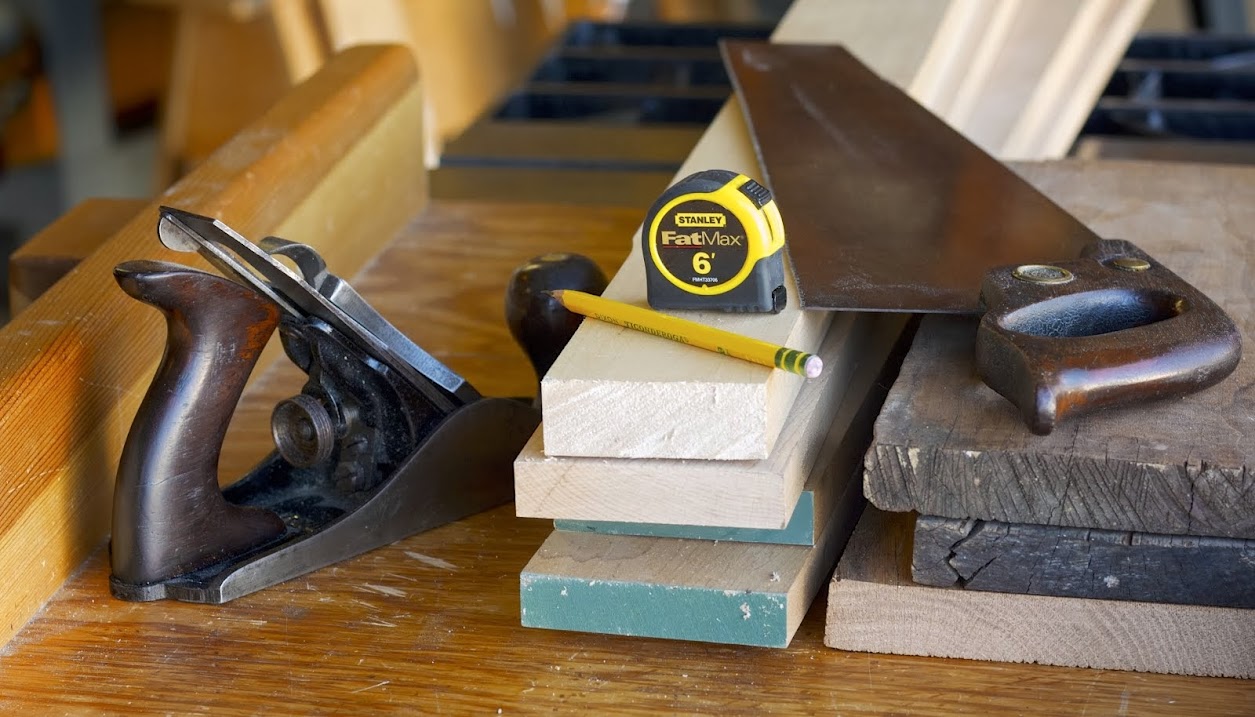 |
| Wood Carving Tool Box |
 |
| Knick-Knack Box |
This spring, I built a couple of boxes using box joinery and jig from my November 22 post. The tool box was built for my collection of wood carving tools. The knick-knack box was built for fun out of scraps from the toddler stool project built this winter.
I selected some pieces of red oak lumber for the tool box. The first step was to cut and surface the boards to size. The next step was to cut the pins and slots to assemble the sides and ends. The table saw and box joint jig were used for this operation.
 |
| Red Oak Cut To Size |
 |
| Box Top & Bottom Parts Prepared for Edge Gluing |
Often it is necessary to cross-cut a wide panel to length and square. The panel is too wide for the power miter saw. It's too narrow to be safely supported with the table saw fence and too large to be safely supported with the table saw miter gauge. A cross-cut sled is commonly used to safely support the panel while cutting exact 90 degree cross-cuts. There are numerous variations of sleds that can be used. The homemade one I use is basic and functional. The panel is supported on the sled with a fence 90 degrees square to the blade. The rail on the underside guides the sled while keeping the 90 degree cross-cut. Mine is 20 plus years old and still delivers accurate square cuts safely.
 |
| Table Saw Cross-Cut Sled |
Prior to gluing I always make a "dry fit" to check that all the joints are cut correctly. Also, I check that everything fits properly and the box is square. After I applied the glue, the box was clamped and allowed to dry. Masking tape was applied to the inside ends of each part so that any glue that was squeezed out could be easily removed.
 |
| Tool Box Glued & Clamped |
The top and bottom were glued and clamped to the box. The pieces were cut slightly over sized so they could easily be trimmed with the router for a flush exact fit with the box sides and ends.
 |
| Top & Bottom Glued and Clamped to the Box |
 |
| Bottom Edges Trimmed with a Flush Trim Router Bit |
After the lid was cut off using the table saw and some final sanding, the finish was applied. I applied a coat of Watco walnut danish oil and three coats of gel polyurethane finish. As I have mentioned in previous blogs, It's a very quick, easy and professional looking finish procedure. All that was left was to attach the hardware and organize my carving tools.
 |
| Wood Carving Tool Box and "Boot" carving Project |









